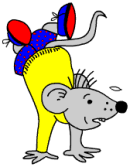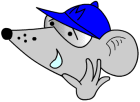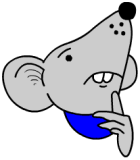 By year 4 expectations are rising as children’s understanding and knowledge increases. The Primary Framework for Mathematics suggests that children should be able to read, write and understand the following words:
By year 4 expectations are rising as children’s understanding and knowledge increases. The Primary Framework for Mathematics suggests that children should be able to read, write and understand the following words:
Take away
subtract
how many are left?
how much less?
difference between,
how much more?
how many more to make?
decrease,
inverse
and the minus sign (–)
They should know that:
Subtraction is the same as taking away, finding the difference between and complementary addition.
Subtraction is non-commutative.
When a larger number is subtracted from a smaller number, the answer is negative.
Subtracting a number from another makes it smaller.
Subtracting zero makes no difference to a number.
Subtraction is the inverse of addition.
They should have good mental strategies for solving subtraction problems with simple numbers.
These two free maths worksheets can be used as a check to see whether some of these fundamentals have been understood.
Free Y4 maths worksheets: Understand subtraction and its relationship to addition (pg 1)
Free Y4 maths worksheets: Understand subtraction and its relationship to addition (pg 2)
 Children always seem very reluctant to check the answers to calculations that they have made. This sometimes results in bizarre answers, often when using a calculator.
Children always seem very reluctant to check the answers to calculations that they have made. This sometimes results in bizarre answers, often when using a calculator.
 We usually think of the terms convex and concave in relation to mirrors and lens. The word convex means curving out or bulging out but it can also be applied to polygons. A convex polygon is one where all the internal angles are less than 180 degrees – the type that we are most familiar with. A concave polygon will have an interior angle greater than 180 degrees – it looks as if it has been pushed in on one side.
We usually think of the terms convex and concave in relation to mirrors and lens. The word convex means curving out or bulging out but it can also be applied to polygons. A convex polygon is one where all the internal angles are less than 180 degrees – the type that we are most familiar with. A concave polygon will have an interior angle greater than 180 degrees – it looks as if it has been pushed in on one side. This maths worksheet gives some practice at adding on to make the next whole thousand. The questions are in the form of:
This maths worksheet gives some practice at adding on to make the next whole thousand. The questions are in the form of: This free maths worksheet looks at the relationship between addition and subtraction, in particular, that subtraction is the inverse or opposite of addition. This gives us an excellent way to check answers.
This free maths worksheet looks at the relationship between addition and subtraction, in particular, that subtraction is the inverse or opposite of addition. This gives us an excellent way to check answers. By year 4 expectations are rising as children’s understanding and knowledge increases. The Primary Framework for Mathematics suggests that children should be able to read, write and understand the following words:
By year 4 expectations are rising as children’s understanding and knowledge increases. The Primary Framework for Mathematics suggests that children should be able to read, write and understand the following words: